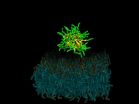(Press-News.org) WHITE PLAINS, N.Y., Aug. 18, 2015 - Shorter mothers have shorter pregnancies, smaller babies, and higher risk for a preterm birth. New research has found that a mother's height directly influences her risk for preterm birth.
Investigators at the March of Dimes Prematurity Research Center Ohio Collaborative looked at 3,485 Nordic women and their babies, and found that maternal height, which is determined by genetic factors, helped shape the fetal environment, influencing the length of pregnancy and frequency of prematurity. In contrast, birth length and birth weight are mainly influenced by transmitted genes.
Preterm birth is the number one killer of newborns in the United States and serious gaps exist between racial and ethnic groups.
More than 450,000 babies are born too soon in the U.S. and the national preterm birth rate is worse than many other high-resource countries, the March of Dimes says. Worldwide, 15 million babies are born preterm, and more than one million die due to complications of an early birth. Babies who survive an early birth face serious and lifelong health problems, including breathing problems, jaundice, vision loss, cerebral palsy and intellectual delays.
"A major goal of the nationwide network of March of Dimes prematurity research centers is identifying genes that govern fetal growth and length of pregnancy. That a woman's height influences gestational length, independent of the genes she passes on that determine fetal size, is a major finding by our research networks, and the first of what we expect to be many genetic contributions," said Joe Leigh Simpson, MD, March of Dimes senior vice president for Research and Global Programs.
"The innovative, team-based model of our prematurity research centers is critical to understanding the unknown causes or preterm birth. This new finding adds one small piece toward solving the much larger puzzle of preterm birth," says Dr. Jennifer L. Howse, president of the March of Dimes.
The March of Dimes is raising $75 million to support its five prematurity research centers. These unique, transdisciplinary centers bring together the brightest minds from many diverse disciplines -- geneticists, molecular biologists, epidemiologists, engineers, computer scientists, and others -- to work together to find answers to prevent premature birth. In addition to the Ohio Collaborative, the March of Dimes has established research centers at Stanford University School of Medicine in California, at the University of Pennsylvania, at Washington University in St. Louis, and at the University of Chicago, Northwestern University and Duke University.
"Our finding shows that a mother's height has a direct impact on how long her pregnancy lasts," said Louis Muglia, MD, PhD, the primary investigator of the Ohio Collaborative, and co-director of the Perinatal Institute at Cincinnati Children's Hospital Medical Center. "The explanation for why this happens is unclear but could depend not only on unknown genes but also on woman's lifetime of nutrition and her environment."
INFORMATION:
The research paper, "Assessing the Causal Relationship of Maternal Height on Birth Size and Gestational Age at Birth: A Mendelian Randomization Analysis," was published online Aug. 18 by PLoS Medicine.
The March of Dimes works to improve the health of babies by preventing birth defects, premature birth and infant mortality. The March of Dimes is the leading nonprofit organization for pregnancy and baby health. For the latest resources and information, visit marchofdimes.org or nacersano.org. Visit prematurityresearch.org for more information about the research centers. Find us on Facebook and Twitter.
University of Adelaide researchers have discovered a high-fat diet may impair important receptors located in the stomach that signal fullness.
Published today* in the journal PLOS ONE, researchers from the University's Centre for Nutrition and Gastrointestinal Diseases (based at the South Australian Health and Medical Research Institute) investigated the association between hot chilli pepper receptors (TRPV1) in the stomach and the feeling of fullness, in laboratory studies.
"The stomach stretches when it is full, which activates nerves in the stomach to tell the ...
New species evolve whenever a lineage splits off into several. Because of this, the kinship between species is often described in terms of a 'tree of life', where every branch constitutes a species. Now, researchers at Uppsala University have found that evolution is more complex than this model would have it, and that the tree is actually more akin to a bush.
Less than a year ago, a consortium of some hundred researchers reported that the relationship between all major bird clades had been mapped out by analysing the complete genome of around 50 bird species. This included ...
August 18, 2015 - For children with aggressive brain cancers called high-grade gliomas (HGG), the chances of survival are improved when surgery is successful in eliminating all visible cancer, reports a study in the September issue of Neurosurgery, official journal of the Congress of Neurological Surgeons. The journal is published by Wolters Kluwer.
In addition to showing better survival with gross total resection (GTR) for children with HGG, the results suggest that this survival benefit is greater in girls compared to boys with HGG. The study provides "compelling evidence ...
Women's contraceptive choices are more often driven by current relationships and sexual activity than by long-term pregnancy intentions, according to Penn State College of Medicine researchers.
Cynthia H. Chuang, associate professor of medicine and public health sciences and Carol S. Weisman, Distinguished Professor of Public Health Sciences and Obstetrics and Gynecology and colleagues surveyed nearly 1,000 women in Pennsylvania, all with private health insurance covering prescription contraception, on their contraception use -- including prescription and over-the-counter ...
DURHAM, N.C. -- New methods for analyzing personal health and lifestyle data captured through wearable devices or smartphone apps can help identify college students at risk of catching the flu, say researchers at Duke University and the University of North Carolina-Chapel Hill.
With help from a mobile app that monitors who students interact with and when, epidemiologist Allison Aiello of UNC and statistician Katherine Heller of Duke have developed a model that enables them to predict the spread of influenza from one person to the next over time.
Unlike most infection ...
Imagine staying dry underwater for months. Now Northwestern University engineers have examined a wide variety of surfaces that can do just that -- and, better yet, they know why.
The research team is the first to identify the ideal "roughness" needed in the texture of a surface to keep it dry for a long period of time when submerged in water. The valleys in the surface roughness typically need to be less than one micron in width, the researchers found. That's really small -- less than one millionth of a meter -- but these nanoscopic valleys have macroscopic impact.
Understanding ...
(SACRAMENTO, Calif.) -- In a discovery that is likely to rewrite immunology text books, researchers at UC Davis have found that early exposure to inflammatory cytokines, such as interleukin 2, can "paralyze" CD4 T cells, immune components that help orchestrate the body's response to pathogens and other invaders.
This mechanism may act as a firewall, shutting down the immune response before it gets out of hand. However, from a clinical standpoint, this discovery could lead to more effective cancer immunotherapies, better drugs for autoimmune conditions and new ways to ...
Scientists are planning for a future in which superbugs gain the upper hand against our current arsenal of antibiotics. One emerging class of drug candidates, called AMLPs (antimicrobial lipopeptides), shows promise, and an August 18 study in the Biophysical Journal explains why: they selectively kill bacterial cells, while sparing mammalian host cells, by clumping together into microscopic balls that stick to the bacterial membrane--a complex structure that will be slower to mutate and thus resist drugs.
"The pressing need for novel antibiotics against resistant strains ...
SAN FRANCISCO--Early data coming in from a massive, four-year deployment of seismometers onshore and offshore in the Pacific Northwest are giving scientists a clearer picture of the Cascadia subduction zone, a region with a past and potential future of devastating "megathrust" earthquakes.
The preliminary results from the Cascadia Initiative include a report of previously undetected, small earthquakes offshore, and seismic imaging that reveals new offshore structures at the subduction zone. The reports, published as a focus section in the September-October 2015 issue ...
Research indicates that the use of condoms may cause some men to experience erection difficulties. However, in a study of 479 heterosexual men who used condoms and were 18 to 24 years old, those who reported condom-associated erection problems were also more likely to experience more generalized erection difficulties.
Investigators also found that more than one-third of participants had never been taught how to use a condom correctly. Clinicians should assess whether men using condoms experience condom-associated erection problems and where appropriate, make referrals ...

